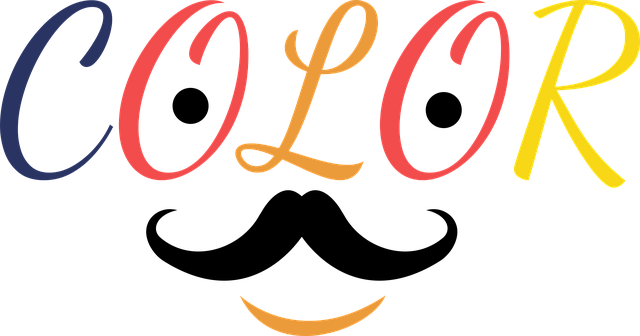The Google HowTo Schema is a JSON-LD markup tool that enhances online content visibility by providing structured data for step-by-step guides, recipes, and tutorials. It benefits creators of how-to, tutorial, and recipe blogs, making their content more engaging and visible to users seeking instructions. By structuring data in the HowTo format, developers can create rich results on SERPs, featuring images, bullet points, and videos, which improves user engagement and click-through rates. Effective use of this schema optimizes search rankings, particularly in competitive markets, by helping search engines better understand and display instructional content. Success is measured through KPIs like CTR, allowing for continuous optimization and improved user satisfaction.
- Understanding Google HowTo Schema: An Overview
- The Role of Structured Data in Search Results
- Implementing HowTo Schema for Step-by-Step Content
- Enhancing Display with Images and Context
- Best Practices for Optimizing Instructional Content
- Measuring Success: Analyzing Schema Markup Effects
Understanding Google HowTo Schema: An Overview

Google HowTo Schema is a powerful tool designed to help content creators enhance their online visibility and provide users with more structured, actionable information. It’s a type of structured data markup that allows search engines, particularly Google, to understand and display your content in a specialized format known as rich results or enhanced snippets. When you mark up your step-by-step guides, recipes, or tutorials using this schema, it provides a clear overview of the process, making it more likely for your content to be featured prominently in search engine results pages (SERPs).
The HowTo JSON-LD format is a common way to implement this schema. It involves encoding the steps and instructions into structured JSON data, which can include text, images, and even video elements. By integrating this markup into your website’s code, you enable Google to interpret and present your content as an interactive guide, complete with user-friendly visuals and context, thus improving the overall search experience for users seeking instructional information. This schema is particularly beneficial for those creating how-to guides, tutorials, or recipe blogs, ensuring their content stands out and attracts more clicks from potential readers.
The Role of Structured Data in Search Results

In today’s digital landscape, where users are increasingly dependent on search engines for guidance and information, structured data plays a pivotal role in enhancing online experiences. Google, as the leading search engine, has recognized this need and introduced powerful tools like the HowTo Schema. By marking up step-by-step content with this schema, creators can provide search engines with a clear understanding of their instructions, enabling more accurate and rich display in results pages. This structured data allows for the presentation of enhanced, visual-rich snippets known as “Rich Results for HowTo,” which not only improves user engagement but also boosts click-through rates.
The benefits extend beyond aesthetics; well-structured data helps search engines crawl and index content more efficiently. For instance, using HowTo JSON-LD, developers can create a structured format that easily communicates the context and purpose of instructional content. This ensures that when users search for specific how-to queries, relevant results are presented, making information discovery faster and more intuitive. Such SEO tagging practices are vital for standing out in competitive search result landscapes and providing valuable assistance to those seeking guidance.
Implementing HowTo Schema for Step-by-Step Content

Implementing the Google HowTo Schema is a powerful way to enhance the display of step-by-step content in search results. This schema allows you to provide structured data that highlights each step, making your instructional content more engaging and user-friendly. By following the JSON-LD format, developers can easily integrate this structure into their websites. Each step is represented as a distinct item, often with an associated image, which improves visual appeal and comprehension.
For example, when creating a schema for a “How to Bake a Cake” guide, you would define each stage of the process: from gathering ingredients to decorating the final product. Schema markup ensures that search engines understand the context and hierarchy of your content, leading to improved rich results. This can include step-by-step images, video thumbnails, or even interactive elements, all derived from your HowTo JSON-LD implementation.
Enhancing Display with Images and Context

Integrating images and providing a rich contextual description significantly enhances how Google displays your content in search results, especially with the use of the HowTo Schema. When properly marked up, this schema allows search engines to understand that your page offers step-by-step instructions, complete with relevant visuals. This leads to what’s known as a “rich result” – a formatted snippet within search results that includes not just text but also images, bullet points for each step, and even video content if available.
For instance, a search query for a “how-to bake a cake” might yield a rich result featuring an appealing image of a freshly baked cake, along with clear instructions broken down into manageable steps. This visual appeal not only grabs the user’s attention but also significantly improves click-through rates. By adding descriptive alt text to your images and ensuring each step is concise yet informative, you can create an engaging and helpful experience for users, making your content stand out in a crowded search results page.
Best Practices for Optimizing Instructional Content

When marking up step-by-step content with the HowTo schema, it’s crucial to follow best practices that enhance both user experience and search engine optimization (SEO). Firstly, ensure each step is clear, concise, and easily understandable. This not only benefits your readers but also signals to Google that your content is of high quality. Utilize descriptive language for each step, incorporating relevant keywords naturally without overstuffing. This helps in achieving better rankings on Google HowTo Schema rich results.
Additionally, include images where appropriate to illustrate each step. Visual aids significantly improve comprehension and can boost engagement. For SEO, remember that alt text for images is crucial—it provides context to search engines and improves accessibility. Use the HowTo JSON-LD format to structure your data, which not only assists Google in understanding your content but also enhances how it’s displayed in rich results, such as step-by-step guides with interactive elements.
Measuring Success: Analyzing Schema Markup Effects

Measuring success when implementing Google HowTo schema markup is a crucial step to understanding its impact on search results. By analyzing the effects, content creators and SEO professionals can gauge how effectively this structured data enhances visibility and user engagement. Key performance indicators (KPIs) may include an increase in click-through rates (CTR) from enhanced snippets featuring step-by-step instructions with relevant images.
Schema for guides and tutorial schema markup allows search engines to better comprehend the instructional context, resulting in more accurate and appealing display of content. HowTo SEO tagging techniques can drive organic traffic by positioning the content as a valuable resource for users seeking specific solutions or knowledge. Over time, through continuous analysis and optimization, these strategies contribute to improved search rankings and user satisfaction.
